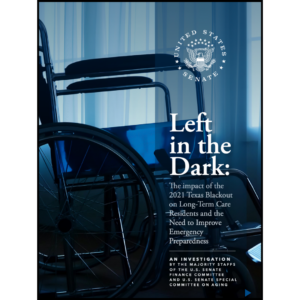Wide beds: Added inches, added safety
Clinical staff at Baptist Homes Society’s Mt. Lebanon Campus in Pittsburgh, Pa., recognized that fall rates among the facility’s residents were not acceptable and some action was required. By researching available equipment solutions and committing to a significant investment to obtain new beds designed with features intended to reduce risk of falls for high-risk patients and facilitate egress to promote mobility, Baptist Homes has been successful in substantially reducing fall rates within its facility.
Clinical staff understood the need to reduce falls and successfully presented its case to the organization’s chief executive officer, gaining top management's full support. Since Baptist Homes did not have the necessary resources to immediately implement an effective solution strategy, its foundation sought and was able to obtain grants from its Auxiliary, the George H. Campbell, Lillian S. Campbell and Mary S. Campbell Foundation and Joerns RecoverCare, Inc., to address the fall risks.
Seeking solutions
Clinical staff became aware of work presented in the literature that discussed how wider beds in healthcare settings could be effective in reducing fall-risk frequency to residents. Fall severity was also a consideration and bed vertical travel range was also an important factor considered. Beds needed to go low enough for resident safety and high enough for easy resident egress and to allow for good caregiver posture when delivering in-bed care. In addition, other bed system design enhancements were reviewed such as ambulatory assist-enabling devices to facilitate bed egress and reduce demands on caregivers.
New beds with these risk-reduction features were obtained in August 2013, for a 41-bed dementia unit whose residents were at high risk for falls. These new bed systems were wider than previous traditional healthcare beds and immediately determined to be more comfortable because of the additional width and upgraded mattresses.
Beyond comfort, important features related to the upgraded mattress surfaces included firm mattress perimeters that provided stability for residents when standing from a sitting position and a viscoelastic foam top that envelops the body and redistributes pressure, important for wound prevention. The new bed frames were also equipped with side grip enablers to assist in resident transfers and in bed mobility. Having the side grip enablers is intended to facilitate bed egress for residents, promoting mobility thus reducing demands related to patient transfers on caregivers.
New beds improve fall rates
Acquiring new beds does require an investment but they are an expense normally incurred to update and improve a facility. Because of the work clinical staff had done to create top management support and grants the organization’s foundation was able to obtain the acquisition of new beds was not an obstacle. Providing the new beds with features to prevent falls and facilitate bed egress added little cost to the overall cost of the beds. The kit to achieve the wide bed feature was $225 per bed and the larger mattress required added approximately $50 to $60 per mattress. To add the deluxe ambulatory assist enabling device was about $195 per set per bed. Total cost per bed including all upgraded features was $2,235.
In the 12-months prior to installation of the new beds there were 134 falls reported on the unit, equating to a fall rate of 8.95 falls per 1,000 resident days. In the 12 months following installation of the new beds, reported falls were reduced to 95, equating to a reduced fall rate of 6.35 falls per 1,000 resident days. This translates to a decrease of 39 falls for the first year post-intervention, which was a 29% reduction in the annual reported fall rates.
In addition to reduced fall rates, the number of severe injuries as a result of bed falls was also reduced. Prior to installation of the new beds there were two falls out of bed resulting in a severe injury to the resident. These injuries included a cervical neck fracture and a knee fracture. Since the new beds have been put in place there have been no severe injuries reported, related to falls from bed.
As a result of the success reported on the dementia unit, additional beds were obtained for the short-term rehabilitation unit in August 2014. In the two months following installation of these new beds, falls in the short-term rehabilitation unit were reduced by 66 percent (from 12 falls to 4 falls) when compared to the same two-month period one year earlier.
Additional benefits
Although not a focus of this study, in addition to a reduction in the number of falls, staff noted improvement in resident sleep patterns resulting in a better quality of life. No formal studies were performed on sleep patterns and a study of sleep patterns related to wider bed surfaces could be considered for future research.
Qualitative data was provided by night shift staff via daily reports that included how the unit’s residents slept through the night. Some residents were able to control their bed function better since the new remote control is user friendly and can be moved from the inside of the bed to the outside the bed at night for staff to access. The enablers on the side of the bed with nonslip grips helped with transfer and bed mobility restorative programs. Some residents were taught how to reposition themselves in bed and use the enablers to stand up when transferring.
The new beds are designed with a height travel range, which provides a bed height conducive to standing, and with the position of the enablers it was easier for the resident to pivot off and stand from the bed.
Summary
Bed systems are very important to the process of delivering care in the long-term care (LTC) environment and can have an impact on the safety and well-being of both residents and caregivers. Further investigations are required, but this initial evidence is suggesting that wider bed surfaces might be an effective intervention for reducing falls from bed in the LTC environment.
A laboratory study has provided evidence that wider beds for LTC residents may reduce risk of falls. This current case study, discussed in this article, further adds to the evidence base demonstrating that wider, height-adjustable beds might be effective in reducing both the frequency and severity of fall-related injuries. The limitations of this current case study are recognized in that it is only one small study. However indications are consistent with previous laboratory study evidence.
It is important to have a well-thought-out process for selecting beds for an LTC facility. Various disciplines within the facility, including representation from clinical, rehabilitation, risk management, engineering and purchasing functions should be consulted. The knowledge from the perspective of these different disciplines will contribute to good decision making.
If a wider surface can reduce risk and prevent a resident from falling out of bed, many potential negative outcomes might be avoided. These negative outcomes include the pain, suffering and disability that residents might experience and the large financial burden placed on the healthcare delivery system related to resident falls.
Wider bed surface options are currently available with little cost increase over available traditional beds. The small additional cost for wider bed systems can be a very prudent investment when considering the alternative costs which can result from a high number of resident falls.
In addition to surface width there are other important bed system features to consider including vertical travel distance and range, side-mount enablers and a good surface with pressure-relieving characteristics. Organizations should take the time and make the effort to best match bed system design and function to the needs of their resident population. Proper bed systems are very important for maintaining a high quality and safe environment for delivering care.
To read the complete study, click here.
Guy Fragala, PhD, PE, CSP, CSPHP, has more than 40 years of experience as an Occupational Safety and Health professional and is currently the senior advisor for ergonomics at the Patient Safety Center of Inquiry, Tampa, Fla.
I Advance Senior Care is the industry-leading source for practical, in-depth, business-building, and resident care information for owners, executives, administrators, and directors of nursing at assisted living communities, skilled nursing facilities, post-acute facilities, and continuing care retirement communities. The I Advance Senior Care editorial team and industry experts provide market analysis, strategic direction, policy commentary, clinical best-practices, business management, and technology breakthroughs.
I Advance Senior Care is part of the Institute for the Advancement of Senior Care and published by Plain-English Health Care.
Related Articles
Topics: Articles , Clinical , Risk Management











